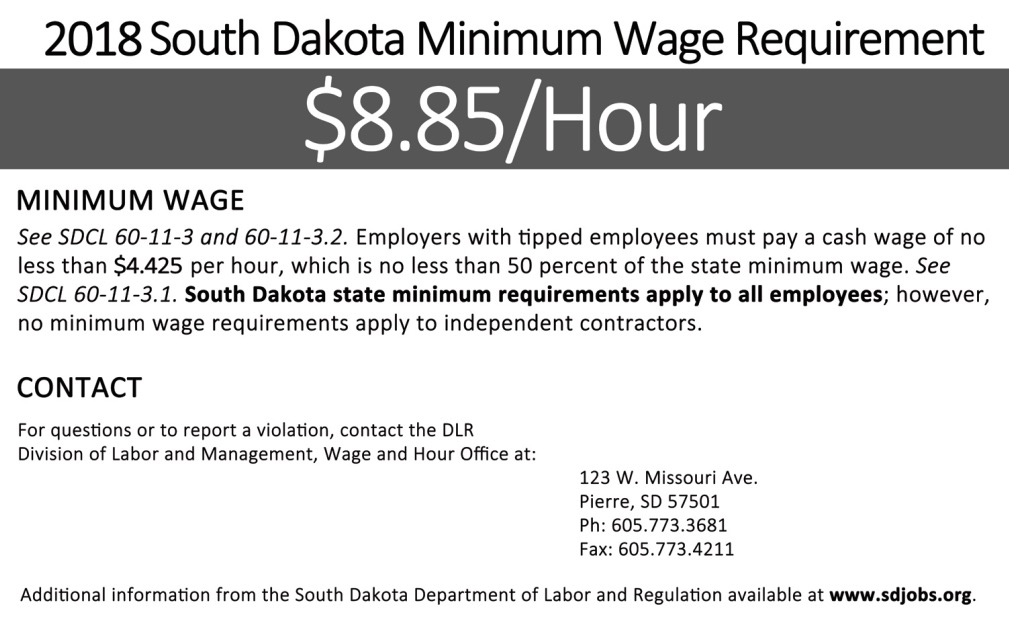South Dakota’s minimum wage will increase 20 cents to $8.85 an hour next year. That’s the largest jump since South Dakotans approved raising the minimum wage to $8.50 an hour and implementing an automatic annual cost-of-living adjustment in the 2014 election. (On behalf of the South Dakota Democratic Party that brought you Initiated Measure 18 and helped reject the Republican effort to repeal the provision of that law applying the minimum wage to young workers, you’re welcome.)

The minimum wage hike is pegged to the Consumer Price Index (for urban consumers) as calculated by the federal Department of Labor in August. Last month, the CPI-U rose 0.4%, bringing the average for the past 12 months to 1.9%. $8.50 + $8.50*1.9% = $8.814, and statute says keep it neat and round to the nearest nickel, so voilà—$8.85.
Servers hustling for tips get half minimum, so they will see their guaranteed pay go up a dime to $4.425 an hour.
The new minimum wage takes effect on January 1.
By the way, we’re still waiting for the economic decline that Republican/corporate opponents assured us would ensue from paying the lowest-earning workers more. South Dakota’s nonfarm employment and income have grown every month since implementation of the minimum wage increase in January 2015. And echoing Democratic predictions, poverty is down in South Dakota and especially in Sioux Falls (funny that Sioux Falls boosters didn’t mention the increased minimum wage as one of the factors contributing to the reduction of poverty).
Of course, the South Dakota Retailers also predicted the CPI would push the minimum wage to $9.10 by 2018.
Cory, are you sure you’re reading the same charts you provided on SD economic growth?
I’ll grant that nonfarm employment growth has been positive, but the rate of growth has been under the curve of the US average, and in 2017 that growth is now approaching 0%. I doubt the minimum wage has had a significant impact on that rate of employment growth (Farm income is probably the primary driver).
When it comes to poverty indicators, it’s more muddied. Medicaid & CHIP enrollments have been going up over time, but took a dip most recently (we’ll need to see if this is a pivot or merely a blip). Child care subsidies have been tracking negatively since 2011, but saw a small spike recently (again, need to see whether this bears out as a blip or sea change).
Given the practical minimum wage in Sioux Falls is at least $10 / hr, the minimum wage law is not going to have a substantial impact in our metropolitan community. When Panda Express & Little Caesar’s are advertising $13.00 per hour to run the cash register, market forces are doing their job.
The nonfarm income growth chart in the bottom right of page 2 tells us what’s happening; the change in growth is falling (slowing down), and has been since 2015. We’re now on par with the nation in earnings growth, but behind in employment growth.
The big question is what’s the minimum wage doing in smaller communities across South Dakota. What’s the economic impact?
Sure I’m sure! I’m looking at the charts on page 2 of the linked document from BFM. Some months aren’t impressive, but every month shows positive and in the range of immediate post-Recession figures.
I agree that’s a very superficial analysis, but it is evidence that no clear economic downturn to which the minimum wage could be pegged has taken place. I welcome an analysis that focuses on small towns.